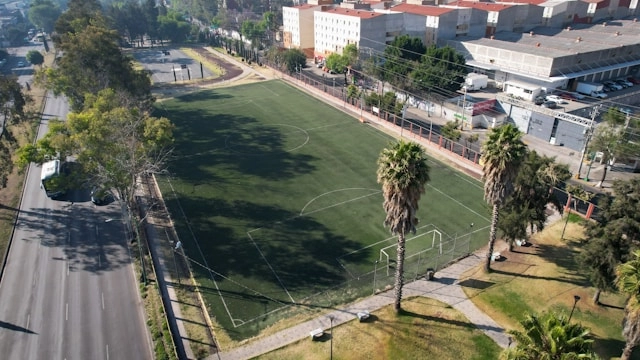Sports Facility Construction
Sports facilities, especially artificial turf fields, are crucial spaces for both amateur and professional athletes. These facilities provide excellent opportunities for active participation and help bring communities together. Setting up an artificial turf field involves careful planning, choosing the right materials, and ensuring proper ground preparation. In this article, we’ll guide you through the essential steps for building an artificial turf field and a comprehensive sports facility.
Key Steps for Artificial Turf Field Setup
1. Land Selection and Planning
The first step is selecting the appropriate plot of land. This involves not only the size of the land but also environmental factors such as drainage, proximity to infrastructure, and safety. Ideally, the site should be flat, free from standing water, and distanced from surrounding buildings.
2. Ground Preparation
Ground preparation is one of the most critical steps in setting up an artificial turf field. The soil must be leveled, compacted, and properly drained. Typically, the soil is excavated to a depth of 15-20 cm, and drainage materials are added to ensure water runoff. This prevents water pooling and ensures the field remains usable in all weather conditions.
3. Infrastructure and Electrical Systems
Before construction, it’s important to install necessary infrastructure such as lighting, security cameras, and electrical lines. These systems should be laid underground to avoid clutter and maintain the aesthetic appeal of the facility. Water supply lines and other utilities should also be considered during this stage.
4. Turf Installation
Artificial turf is the primary surface material for the field. It is often made of synthetic fibers designed to mimic natural grass. The turf is rolled out and laid on top of a specialized shock-absorbing base layer. Proper installation ensures that the field will last for many years with minimal maintenance.
5. Perimeter Fencing and Landscaping
Safety is essential, so the field should be enclosed with durable fencing. This helps keep the ball in play and protects players. Additionally, landscaping around the field should be well-planned, including areas for spectators, benches for players, and other functional spaces.
6. Lighting and Security
Adequate lighting is necessary for evening games. High-powered lights should be installed to ensure the entire field is illuminated. Security cameras should also be placed to monitor the area and ensure the safety of players and equipment.
7. Sports Equipment and Other Needs
For a football field, goalposts and nets are essential. Benches and player seating should be added around the field, and any other sports-related infrastructure such as water stations or medical facilities should be planned.
Key Considerations for Building a Sports Facility
If you're planning a larger sports facility beyond an artificial turf field, the planning becomes more complex. Multiple sports disciplines such as football, basketball, tennis, or volleyball require more infrastructure. Each sport has its own specific requirements.
1. Needs Analysis
Conduct a needs analysis to understand the types of sports that will be offered, the facility size, and the expected usage. This is critical for making sure the facility is designed to be functional and efficient.
2. Facility Design
Designing a sports facility requires the expertise of architects and engineers. The design must take into account the dimensions of the fields, infrastructure requirements (restrooms, locker rooms), parking areas, and future expansion potential.
3. Utilities and Infrastructure
Water, electricity, and heating systems are essential for a sports facility to operate effectively. Additionally, showers, locker rooms, and toilets should be incorporated into the design to meet the needs of athletes and spectators.
4. Environmentally Friendly Design
Sustainable design practices, such as using recyclable materials, solar energy, and rainwater harvesting, can significantly reduce operational costs and environmental impact.
Cost Breakdown for Artificial Turf Field and Sports Facility Construction
The construction of an artificial turf field and sports facilities can be expensive, but with careful planning and material selection, costs can be managed effectively. Here are some of the key cost factors:
1. Land Costs
Land acquisition or rental can be one of the highest costs, depending on the location and size of the facility.
2. Infrastructure Work
Electrical systems, water lines, and drainage systems are significant costs that must be factored into the overall budget.
3. Turf and Surface Installation
The cost of synthetic turf and the preparation of the base layer can vary depending on the materials selected.
4. Lighting and Security Systems
Lighting fixtures, security cameras, and other technological infrastructure add substantial costs to the overall project.
5. Equipment and Other Materials
The installation of goalposts, fencing, seating, and other sports equipment also adds to the cost.
Conclusion
Building an artificial turf field or a complete sports facility requires thorough planning, material selection, and professional expertise. Modern construction techniques, such as steel structures and advanced turf materials, make these projects quicker and more cost-efficient. Additionally, environmentally sustainable practices help reduce long-term operational costs.
By investing in the right infrastructure and maintaining a focus on design and functionality, sports facilities can serve as long-lasting, valuable resources for communities and athletes alike.






